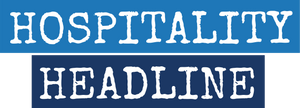If you’re like most individuals and teams this time of year, you’re taking a bit of time to slow down, look back, evaluate successes and failures, and regroup. As part of this practice, you might be asking, ‘Why didn’t I, or we, grow more?’ In the spirit of making the coming year better than this one, let’s take a look at four possible paths forward. Maybe you’ll see yourself and your team somewhere in the mix, and you’ll be able to tweak one or two things to improve.
One of the exercises that may be helpful for you, your team, and perhaps your entire company as you do your year-end assessments and approach your planning and goal setting for the coming year, is to pause and understand the psychology of doing something new.
Probably the hardest thing you can do is something completely new and very different. People who have launched businesses for the first time know this, first-hand. They had many new things to figure and do simultaneously.
Some aspects of launching an entirely new business took them ‘out on a limb,’ whether it was new offerings, new product(s), new resources, new investors or partners, new customers and new methods of winning new customers.
Whether it’s starting a new business, new product, new job opportunity, or new position in the same company, it’s common for people to look back at the extremely intense period of effort, growth, and/or innovation and have the feeling that they accomplished a ton in a short period.
As time passes, however, and the day-to-day merry-go-round settles in, a realization, maybe coupled with a bit of doubt and trepidation, tends to settle in. They look at themselves and the people they work with and notice that everyone is incredibly busy. But is there actually a lot getting done? They’re struggling to juggle everything, but are they actually progressing?
As humans, we are time-limited, and often most of our time gets invested in serving the customers, products, efforts, and relationships that we currently have. There is only so much internal resource, focus, emotional, and intellectual energy and effort.
But growth and remaining competitive require us to step out. Do new things.
Why is it so hard to do new things?
Let’s take a look at four pathways we typically take, easiest to hardest.
Doing nothing.
The easiest thing for someone to do is nothing. So what do I mean by that? I run into a lot of people who think about something, talk with people about it, but in the end they never really act on their ideas, never lay out a specific plan or initiate the efforts they would need to follow through. Thinking is good. Ideas are great but ideas are easy. Execution is hard. So doing nothing is the easiest thing you can do. Good intentions with no actions lead to no results. Regret tends to be the result.
Doing the same things.
Slightly less easy and probably most common is doing the same things. We keep repeating what we have done before. It’s predictable. Provable. Quantifiable. Mentally easy. Safe. It doesn’t require much emotional investment, and probably creates zero organizational tension. Oh, over time we may have found better or more efficient ways to do the things, but it’s still the same things. Doing the same things better isn’t bad, per se, but it probably won’t produce considerable results, and definitely won’t result in hypergrowth - that hockey stick ‘up and to the right’ curve that many people are looking for in their business, department, or job.
Doing the same things, only bigger.
A third pathway is to do the same things, but you do them bigger, meaning bigger scale. So you have campaigns, programs, services, initiatives or products that deliver value. In this approach, you deliver, but to more people. Perhaps you move up market to larger, more complex customers or you reach a new customer base. This is a pathway to growth, but it's relatively on the low end of the risk spectrum. And with lower risk, you may need to settle for less of a reward. That's fine if you're into a value / risk equation and keeping your rewards well balanced with risks.
Are you pushing your boundaries in terms of creativity? Innovation? Passion? Serving the greater good? Chances are, if you look back and realize that you, your team, and/or your company followed this pathway, you’ll answer ‘no’ to some or all of these questions.
Doing the same things, but iterating to improve.
The next level of investment and energy is to iterate and improve the same things. Let's say that you have a software product that delivers a particular value and you create an extension of value in the form of new features and functions. That's certainly an iteration, but it's really the same core product. Or maybe you add a services component as another revenue stream. This is a safe approach to product development. The new things you release are related to the core product you already sell. It will increase incremental revenue, but it's not a home run. It's not something completely new, innovative, even disruptive. Once again, it is an investment of energy and effort. There is some creativity and some innovation involved, but it is incremental. Incremental innovation is a good path for companies to pursue, so they can scale and bring in revenue to fund that net-new thing. They must realize, however, that doing so takes time and can extend out the timeframe for hitting hyper growth mode.
Doing something completely new.
Great rewards are most likely to come from great risk. Doing something completely new will involve the greatest risk because it involves the highest amount of investment of emotional and intellectual energy - and potentially finances. On a personal level, when you set your mind to pursue a new life habit, skill, educational goal, hobby, etc., you will need to find or create your resources, execution structure, game plan, and so on, and then ‘make it your own’.
The same applies to pursuing something completely new in business, except perhaps with greater accompanying risk.
You go through similar motions if you're going to create a new product, software, or a completely new and different service offering. You need to spend adequate time and resources in up-front discovery and planning. Then you need to make it your own. And then you need to figure out how you will define, develop, and bring it to market.
Fear and doubt typically accompany higher risk ventures, and how individuals and teams handle that is another topic altogether. Ultimately, though, the potential benefits and outcomes of a high-risk venture tend to be great. So if you like creativity, if you like to innovate, if you enjoy exploring new ideas, if you have a curious mind, it's probably something you will feel compelled to do.
Coincidentally, these high-risk ventures - doing something completely new - can result in your business growing much faster than any of the other pathways we’ve discussed.
As we wrap up another year, I think it's really good to take a look around you and inside you, and ask: are you working in the business and making incremental improvements … or doing nothing new? Or, perhaps, do you desire to work on the business and do something at least at a higher scale or iterate on what you are already doing…or do you want to tackle something completely new?
Then, set a goal (or a few goals) for the coming year. Intention plus activity equals innovation.
Happy New Year!

